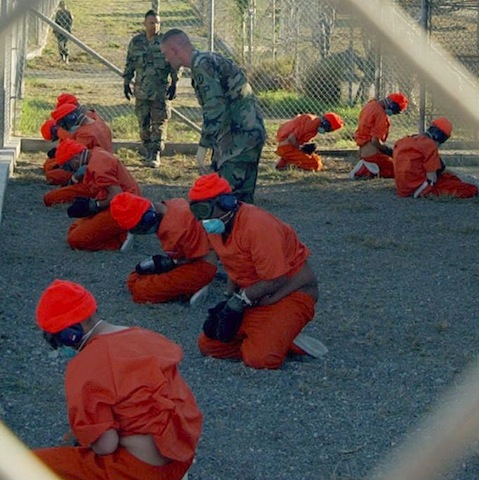Guantánamo At Home?
National Dialogue and Traveling Exhibit
The passage of the current National Defense Authorization Act (NDAA) in December 2011 was intended to keep Americans safe for the foreseeable future. It stipulated the amount of federal spending on defense for the fiscal year 2012, while laying the groundwork for counter-terrorism operations currently undertaken by the United States. However, this bill contained controversial language in Title X, Subtitle D “Counter Terrorism” that some argued gave the U.S. government the right to indefinitely detain American citizens, without trial, who are arrested on American soil. In searching for a way to connect the issues of Guantánamo Bay back to everyday Americans, I can see no better example.
In recent U.S. history, terrorism has been one of the most polarizing subjects our nation has faced. Some Americans feel that the detention center at Guantánamo Bay must be closed as it violates detainees’ human rights. Others feel it helps protect the nation by keeping detainees off American soil. In either of these scenarios, the suspected terrorists are assumed to be foreign nationals who want to do harm to the United States. What if we were discussing sending American detainees to Guantánamo? Would that make us safer or would it only strip Americans of their rights, much like those currently imprisoned there? Some believe the current NDAA could bring this question into play.

Detainees at Camp X-Ray, U.S. Naval Base, Guantánamo Bay, Cuba. January 11, 2002. DoD Photo by Petty Officer 1st Class Shane T. McCoy, U.S. Navy.
When thinking about public opinion of Guantánamo Bay, I believe there is a disconnect that this example helps to expose. If those who are in support of indefinite detention look at the issue from a different perspective, I believe they will be able to forge a new connection to Guantánamo Bay. Rather than thinking of an unnamed, unidentifiable, foreign-born person being held at the detention center, imagine one of your own family members, close friends, or neighbors. Think of the uncertainty they face in never knowing why they are being held or for how long. Look at the image of men in orange jumpsuits, with no ability to see or hear, and imagine one of your family members going through that ordeal. Hopefully, this shift in thought will help show people the dangers of laws such as the NDAA.
Fear mongering aside, the NDAA was a long time coming. Even though President Obama indicated his own reservations in signing the bill, its passage signals a new era in the United States, one where individual freedoms take the back seat to what has been determined as “national security.” Take a look at Guantánamo Bay from that perspective. Does it seem as useful now? For a nation founded on ideas of individual expression, this is a scary path to be staring down.
Posted By Jake Sheff – M.A. Candidate at Indiana University – Purdue University, Indianapolis
Indiana University – Purdue University, Indianapolis is participating in the Guantánamo Public Memory Project‘s National Dialogue and Traveling Exhibit. Opening at NYU’s Kimmel Center for University Life Windows Gallery in December 2012 and traveling to 9 sites (and counting) across the country through at least 2014, the exhibit will explore GTMO’s history from US occupation in 1898 to today’s debates and visions for its future. The exhibit is being developed through a unique collaboration among a growing number of universities as a dialogue among their students, communities, and people with first-hand experience at GTMO.
